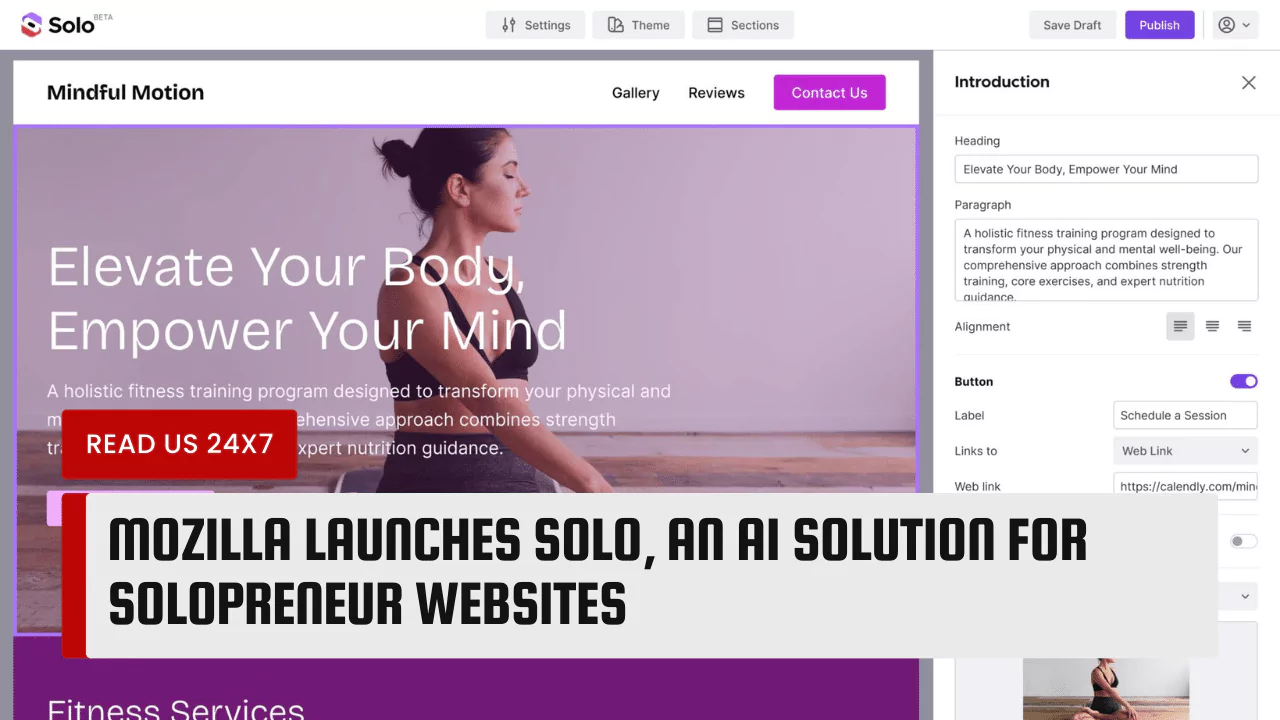Mozilla, the non-profit organization behind the popular Firefox browser, has announced the launch of Solo, an AI-powered solution for building and managing websites for solopreneurs. Solo is designed to help solo entrepreneurs, freelancers, and small business owners create professional and personalized websites in minutes, without any coding or design skills.
Why Choose AI for Website Building?
Building a website can be a daunting and time-consuming task for solopreneurs, who often have limited resources and expertise. Hiring a web developer or designer can be expensive and unreliable while using a DIY website builder can be frustrating and limiting. Solo aims to solve these problems by using AI to automate and simplify the website creation process.
Solo uses natural language processing and computer vision to understand the user’s business goals, preferences, and content. It then generates a customized website that matches the user’s brand identity, industry, and audience. Solo also optimizes the website for SEO, performance, and accessibility, ensuring that it reaches and engages potential customers.
How to Get Started with Solo?
Getting started with Solo is easy and fast. Users only need to answer a few questions about their business, such as the name, description, category, and location. They can also upload their logo, images, and other content that they want to include on their website. Solo will then analyze the user’s input and create a website that suits their needs and style.
Users can preview and edit their website before publishing it. They can change the layout, colors, fonts, and other elements of their website using a simple drag-and-drop interface. They can also add or remove pages, sections, and features, such as a blog, a contact form, or a booking system. Solo provides helpful tips and suggestions along the way, making the website editing process intuitive and fun.
The Technical Journey Behind Solo
Solo is powered by Mozilla’s open-source AI platform, which leverages state-of-the-art machine learning models and frameworks. Solo uses natural language understanding to extract the user’s intent and preferences from their input. It then uses natural language generation to produce relevant and engaging content for the website, such as headlines, slogans, and descriptions.
Solo also uses computer vision to analyze the user’s images and logo, and to generate a suitable color scheme and theme for the website. It then uses generative adversarial networks to synthesize realistic and high-quality images that complement the user’s content and style. Solo also uses reinforcement learning to optimize the website layout and design, based on the user’s feedback and behavior.
What’s Next for Solo?
Solo is currently in beta testing, and Mozilla is inviting solopreneurs to sign up and try it out for free. Solo users will get a free domain name, hosting, and SSL certificate for their website, as well as access to Mozilla’s support and community. Mozilla plans to launch Solo to the public in early 2024 and to offer affordable and flexible pricing plans for solopreneurs.
Mozilla also intends to improve and expand Solo’s features and capabilities, based on the user’s feedback and suggestions. Some of the future plans for Solo include adding more languages, industries, and templates, integrating with popular tools and platforms, such as WordPress, Shopify, and Mailchimp, and enabling voice and video input and output for the website creation process.
Solo is Mozilla’s latest initiative to empower solopreneurs and to promote the open and accessible web. Solo aims to democratize website building and to enable solopreneurs to showcase their work and passion online. With Solo, solopreneurs can focus on their core business and leave the website creation to AI.



